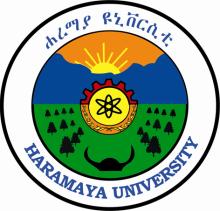Resource information
The study was conducted in Metema District of Amhara Region and the objectives of the study were to assess the major livestock feed resources, to analyze the chemical composition of major feeds, to assess the rangeland condition and investigate the floristic composition and dry matter biomass yields of herbaceous species in the District. The livestock feed resources were assessed by formal and informal survey and analyzed by descriptive statistics. In the assessment range condition, grass species composition, basal cover, litter cover, soil erosion, soil compaction, seedling count, age distribution and woody density enumeration, canopy cover and hedging effect were collected and analyzed by GLM and LSD is used for mean comparison. The chemical analysis of the major feeds, a statistical model Yij= ? + Si + Lj + eij were used. Natural pasture (55.7 %), crop residues (20.7 %), stubble (14.3 %) and hay (9.3 %) were the major feed resources for dry season where as in the wet season, only natural pasture serves as feed resource. The estimated feeds from crop residues (827.16) ton DM per annum, grazing land and stubble (780750 and (51954) ton DM per annum could be obtained, respectively and total estimated available feed supply was 833531.16 ton DM per annum. Crop residues utilization, hay making and amount of supplementation is not appropriate. 33 herbaceous species were identified; of these, 14 and 19 were different grasses and non-grass species. From the non-grass species 6 legumes and 13 sedges and others species were recorded. Of the grasses, 23.07 %, 38.46 % and 30.77% were highly desirable, desirable and less desirable, respectively. Of the identified 20 woody species, 15 %, 35 %, and 50 % were highly desirable, desirable and less desirable, respectively. The height of 41.2% of trees and shrubs in communal grazing areas, 38.5% in road side grazing and 33.3% in enclosed areas were grouped within the height class of (1- 3 m) .The range condition assessment factors (basal cover, litter cover, grass species composition, woody vegetation density, canopy cover, hedging effect, age distribution and total condition score) in communal grazing areas of SBFS were significantly (P<0.05) higher than CBFS. The grass species composition, basal cover, litter cover, age distribution, and woody species density score in enclosed areas had a significantly (P< 0.05) higher than in communal grazing areas and roadside grazing areas. The total grass biomass, highly desirable grasses, desirable grasses species and legumes and others in the SBFS were significantly (P<0.05) higher than in the CBFS. The total dry matter biomass, dry matter biomass of grass and highly desirable grasses, and legumes were significantly (P<0.05) higher in the enclosed areas than the communal and the road side grazing areas. The finding of this study indicate that the rangeland condition of communal and roadside grazing areas of the district need rehabilitation, proper management and regulatory activity. The duration and managements of feed conservation and amounts of supplementation should be improved.



